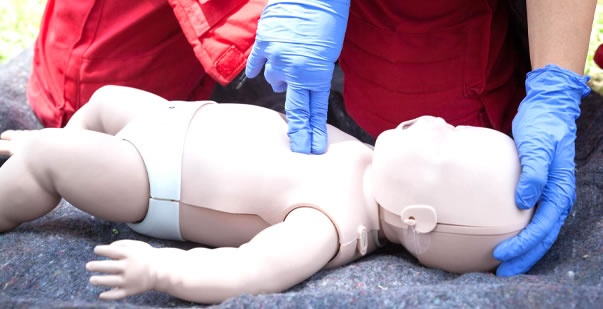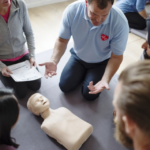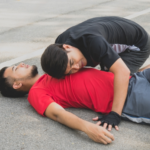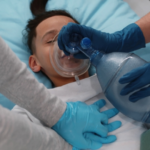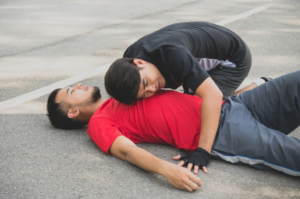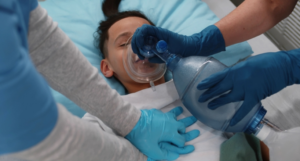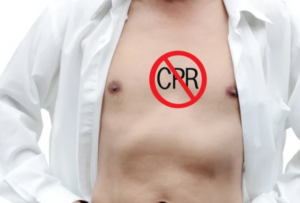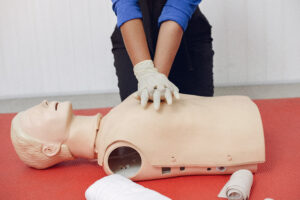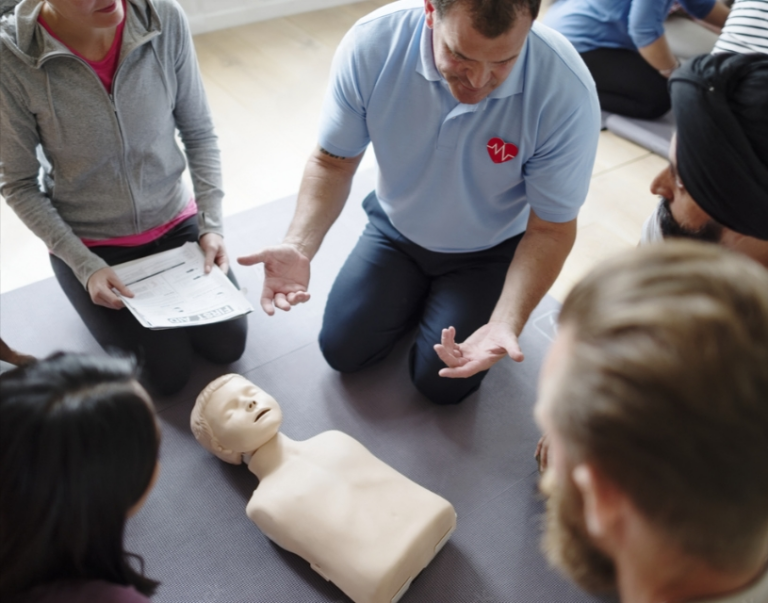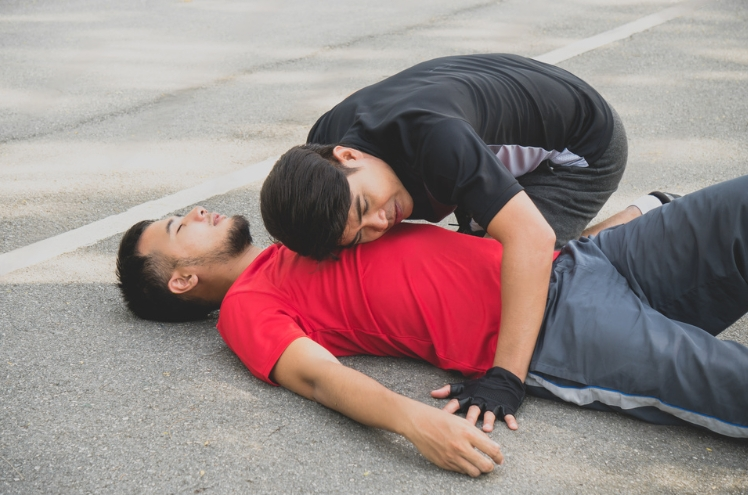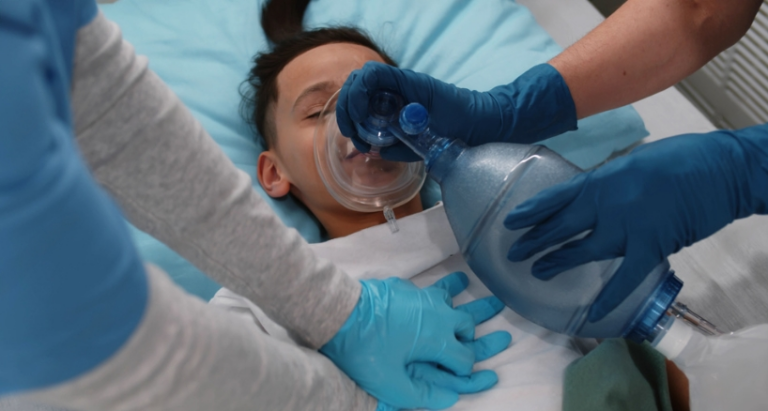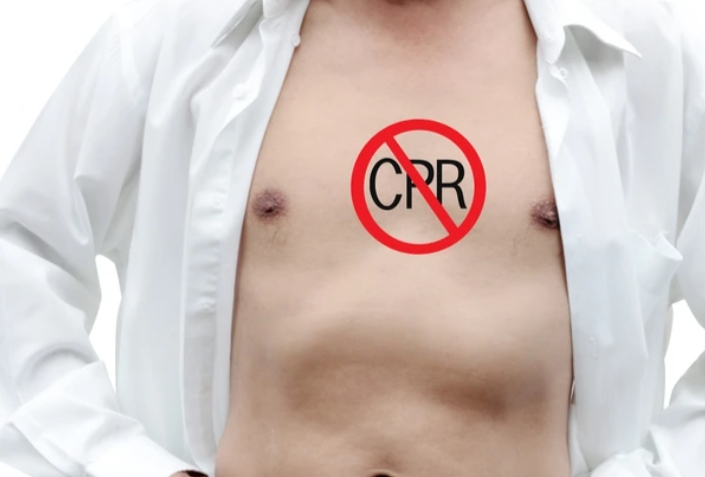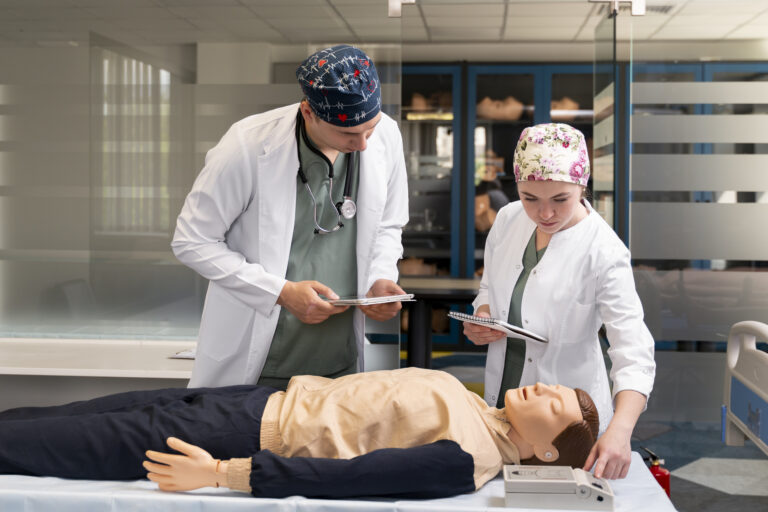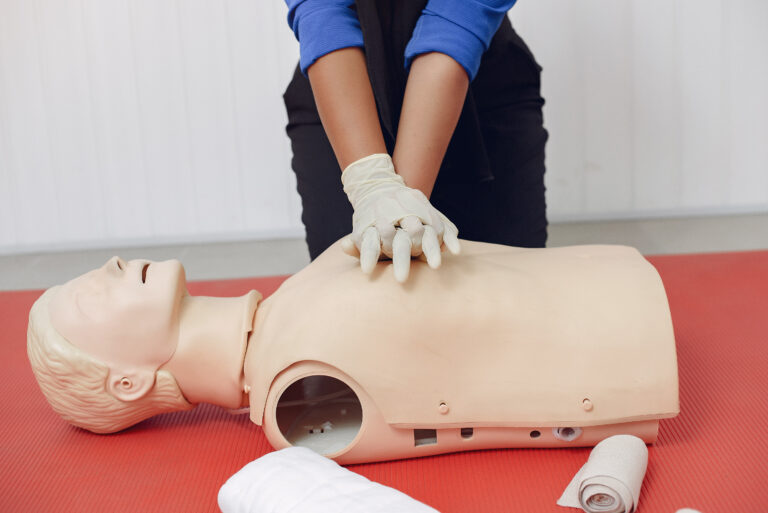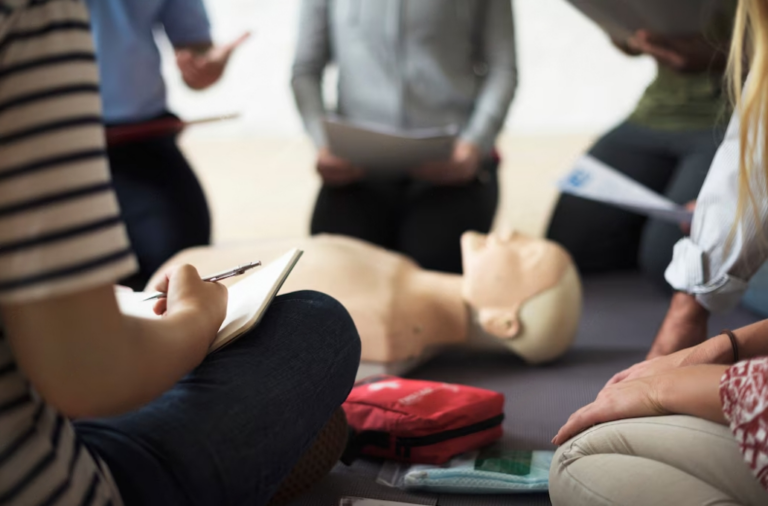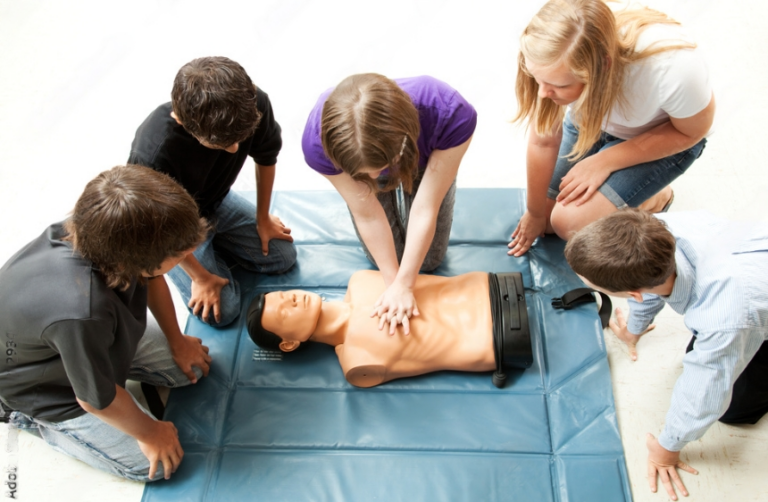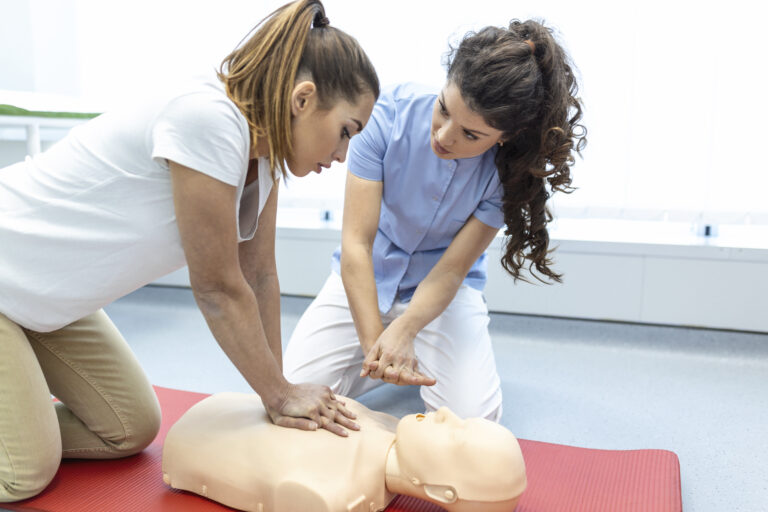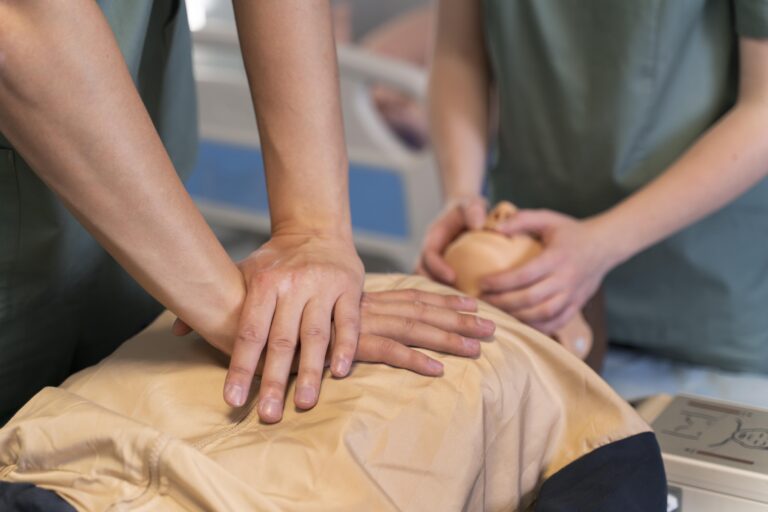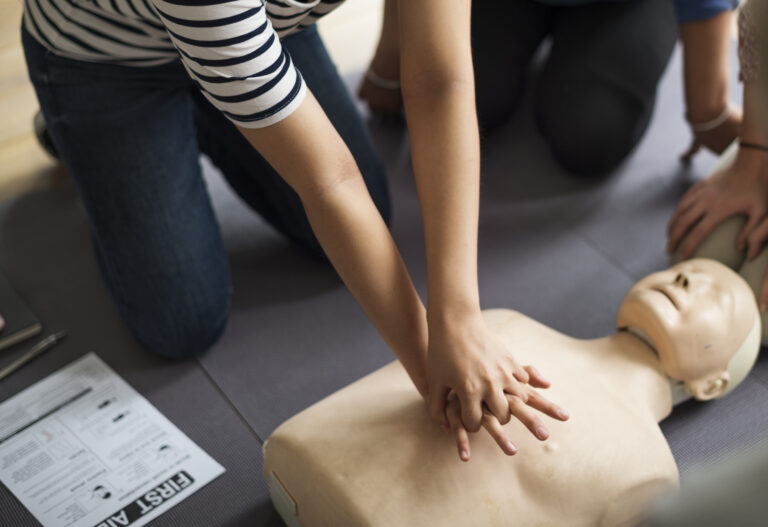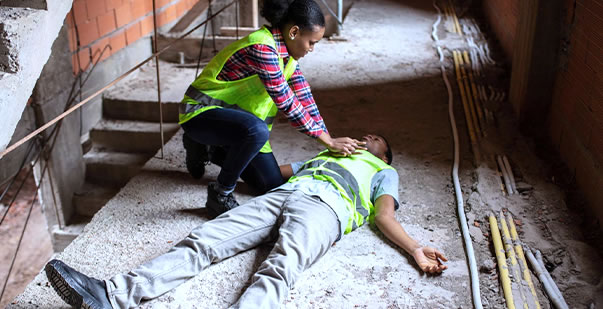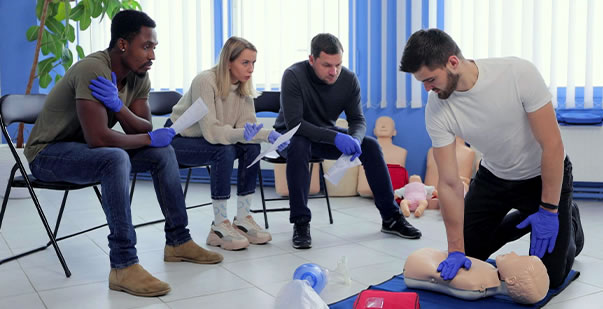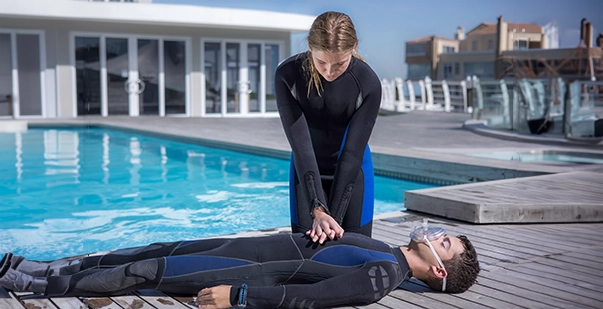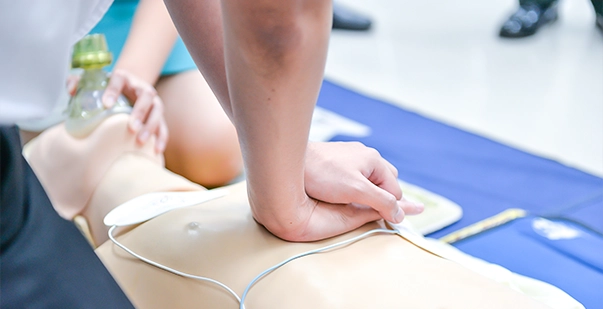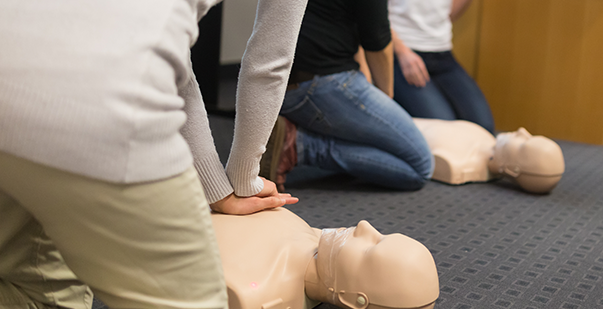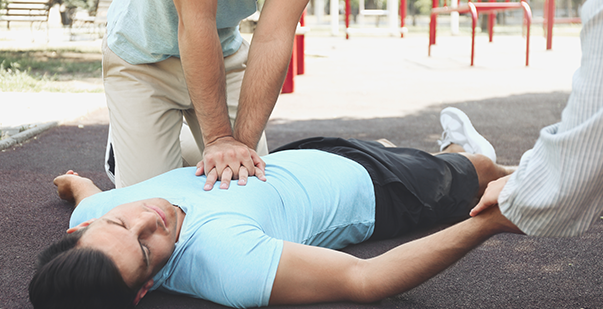Table Of Content(s)
- What is the importance of infant CPR in emergency situations.?
- What is infant CPR and what are the ways to administer it?
- What are the immediate steps to take when an infant is choking?
- Hands-On Infant CPR Training
- Where to Find CPR Training Classes and Resources?
- Conclusion
When it comes to caring for infants, it is important to be prepared for emergencies that can be potentially fatal. If you are a parent, guardian or a nanny, an infant CPR course can prepare you to deliver expertised care in a crisis.
There are at least 1 infant death due to choking every 5 days in the US. Choking can be fatal for infants as their respiratory system is still underdeveloped. Moreover, infants have this common urge to explore things by putting them in their mouths. Without timely intervention in such cases, deoxygenation can lead to irreversible damages. Therefore anyone responsible for taking care of infants should learn infant CPR. This article will guide you through the key points of infant CPR and how to tackle choking emergencies.
What is the importance of infant CPR in emergency situations.?
Infant CPR (Cardiopulmonary Resuscitation) is a vital skill that can mean the difference between life and death in emergency situations involving infants. When an infant experiences choking or stops breathing, immediate action is crucial. CPR serves as the first line of defense, providing essential oxygen to the brain and vital organs until professional medical help arrives.
In these critical moments, CPR plays a pivotal role in sustaining life by restoring the infant’s breathing and circulation. Choking infants face the risk of oxygen deprivation, which can lead to brain damage or even death within minutes. Effective CPR techniques are designed to clear the airway obstruction and facilitate breathing, ensuring oxygen reaches the infant’s lungs and bloodstream.
Understanding and being prepared to perform infant CPR can empower individuals to take swift action during emergencies, potentially saving a precious life. By recognizing the importance of infant CPR and learning the necessary techniques, caregivers and bystanders can become invaluable responders in moments of crisis.
What is infant CPR and what are the ways to administer it?
Infant CPR or cardiopulmonary resuscitation is a lifesaving technique that aims to revive a child’s heart. Choking incidents in infants can often lead to cardiac arrests or respiratory failure. An infant CPR training class is exclusively designed to administer lifesaving skills on the unique anatomy and physiology of a child.
The importance of infant CPR cannot be overstated, as it can be the decisive factor in saving the life of a choking or unresponsive infant. Prompt initiation of CPR can help restore breathing and circulation, preventing brain damage and other serious complications that may result from oxygen deprivation.
These are the ways by which you can perform infant CPR-
- Assess the Situation: Before beginning CPR, assess the infant’s condition to determine if they are responsive and breathing normally.
- Call for Help: If you’re alone, perform CPR for about 2 minutes before calling emergency services. If someone else is present, instruct them to call for help immediately.
Read More: Know the 5 fundamental steps of Basic Life Support.
- Positioning: Lay the infant on a firm, flat surface, such as the floor or a table, with their back facing upwards.
- Open the Airway: Gently tilt the infant’s head back and lift their chin to open the airway.
- Check for Breathing: Look, listen, and feel for signs of breathing for no more than 10 seconds. If the infant is not breathing normally, proceed with CPR.
- Perform Chest Compressions: Using two or three fingers, compress the center of the infant’s chest about 1.5 inches deep at a rate of 100 to 120 compressions per minute.
- Provide Rescue Breaths: After 30 compressions, give two gentle breaths into the infant’s mouth while ensuring the airway remains open.
- Continue CPR: Alternate between compressions and rescue breaths in cycles of 30:2 until help arrives or the infant begins to breathe normally.
There are two main methods used to administer CPR to infants:
- Conventional CPR: This method involves using both chest compressions and rescue breaths in the traditional ratio of 30 compressions followed by two breaths.
- Hands-Only CPR: In situations where the rescuer is not trained in infant CPR or is uncomfortable giving rescue breaths, hands-only CPR involves performing chest compressions only, without rescue breaths. This technique focuses solely on maintaining blood circulation until help arrives.
Both methods can be effective in providing life-saving care to infants in distress, and the choice between them may depend on the rescuer’s level of training and comfort with performing rescue breaths. Regardless of the method used, the prompt initiation of CPR is critical in improving the chances of survival for choking or unresponsive infants.
Read More: Know how to perform CPR for different age groups.
What are the immediate steps to take when an infant is choking?
Choking can be an extremely traumatic experience for both the infant and their caretaker. It requires immediate action as the obstruction needs to be removed as soon as possible. Here are the immediate steps you can take when an infant is choking-
- Assess the Situation: Stay calm and assess the infant’s condition to determine if they are choking. Look for signs such as difficulty breathing, inability to cough or cry, and a bluish tint to the skin.
- Act Promptly: If the infant is choking and unable to breathe, act immediately to clear the airway obstruction.
- Positioning: Support the infant’s head and neck and place them face down across your forearm or thigh, ensuring their head is lower than their body.
- Back Blows: Using the heel of your hand, deliver up to five quick and forceful blows between the infant’s shoulder blades to dislodge the object.
- Chest Thrusts: If back blows are ineffective, turn the infant over onto their back and perform up to five chest thrusts. Place two fingers in the center of the infant’s chest just below the nipple line and push inward and upward sharply.
- Alternate: Continue alternating between back blows and chest thrusts until the object is expelled, or the infant becomes unconscious.
- Call for Help: If the infant becomes unconscious or the obstruction persists, call emergency services immediately and continue providing assistance.
- CPR if Unconscious: If the infant becomes unconscious, begin infant CPR immediately, starting with chest compressions followed by rescue breaths.
Read More: Can CPR cause rib fractures?
Hands-On Infant CPR Training:
- Critical Preparedness: Parents and caregivers equipped with infant CPR training are better prepared to respond effectively in emergency situations involving infants, such as choking or cardiac arrest. This knowledge can mean the difference between life and death for the infant.
- Immediate Intervention: Infants experiencing respiratory distress or cardiac arrest require immediate intervention. Hands-on CPR training empowers individuals to take prompt action, initiating life-saving measures until professional medical help arrives.
- Confidence Building: CPR training instills confidence in parents and caregivers, enabling them to remain calm and composed during emergencies. This confidence is invaluable in performing CPR effectively and managing stressful situations.
Where to Find CPR Training Classes and Resources?
- Local Hospitals and Healthcare Centers: Many hospitals and healthcare facilities offer CPR training classes, including specific courses focused on infant CPR. These classes are typically led by certified instructors and provide hands-on practice in a supportive environment.
- Community Centers and Red Cross Chapters: Community centers and Red Cross chapters often organize CPR training sessions for individuals of all ages, including parents and caregivers. These sessions cover basic CPR techniques, including infant CPR, and may offer certification upon completion.
- Online Resources: Several reputable organizations, including the American Heart Association, cprcourseonline and the Red Cross, offer online CPR training courses. These courses provide interactive modules, videos, and self-paced learning opportunities, making them accessible to individuals with busy schedules or limited access to in-person classes.
- Parenting Classes and Workshops: Parenting classes and workshops frequently include CPR training as part of their curriculum. These classes cater specifically to parents and caregivers, addressing common concerns and providing practical skills for infant care, including CPR.
- Local Fire Departments and Emergency Medical Services (EMS): Some fire departments and EMS agencies offer CPR training to the community free of charge or at a nominal fee. These programs often emphasize the importance of early intervention and may include hands-on practice with CPR mannequins.
By actively seeking out hands-on infant CPR training opportunities, parents and caregivers can acquire essential life-saving skills and contribute to the safety and well-being of infants in their care.
Conclusion
The skills of infant CPR should be mastered by parents, caregivers and anyone taking care of a child. Understanding and implementing these techniques can make the difference between life and death. By going through the steps outlined in this guide, you can prepare yourself for such critical moments. But it is important to enroll in a proper accredited course that abides by the latest industry standards.
The goal of infant CPR is to restore normal circulation and breathing in a baby after a choking accident. The motivation and will to learn these skills can make this world safer for individuals who cannot take care of themselves. Enroll in an infant CPR course to give infants the best chance of survival in the face of choking emergencies.

